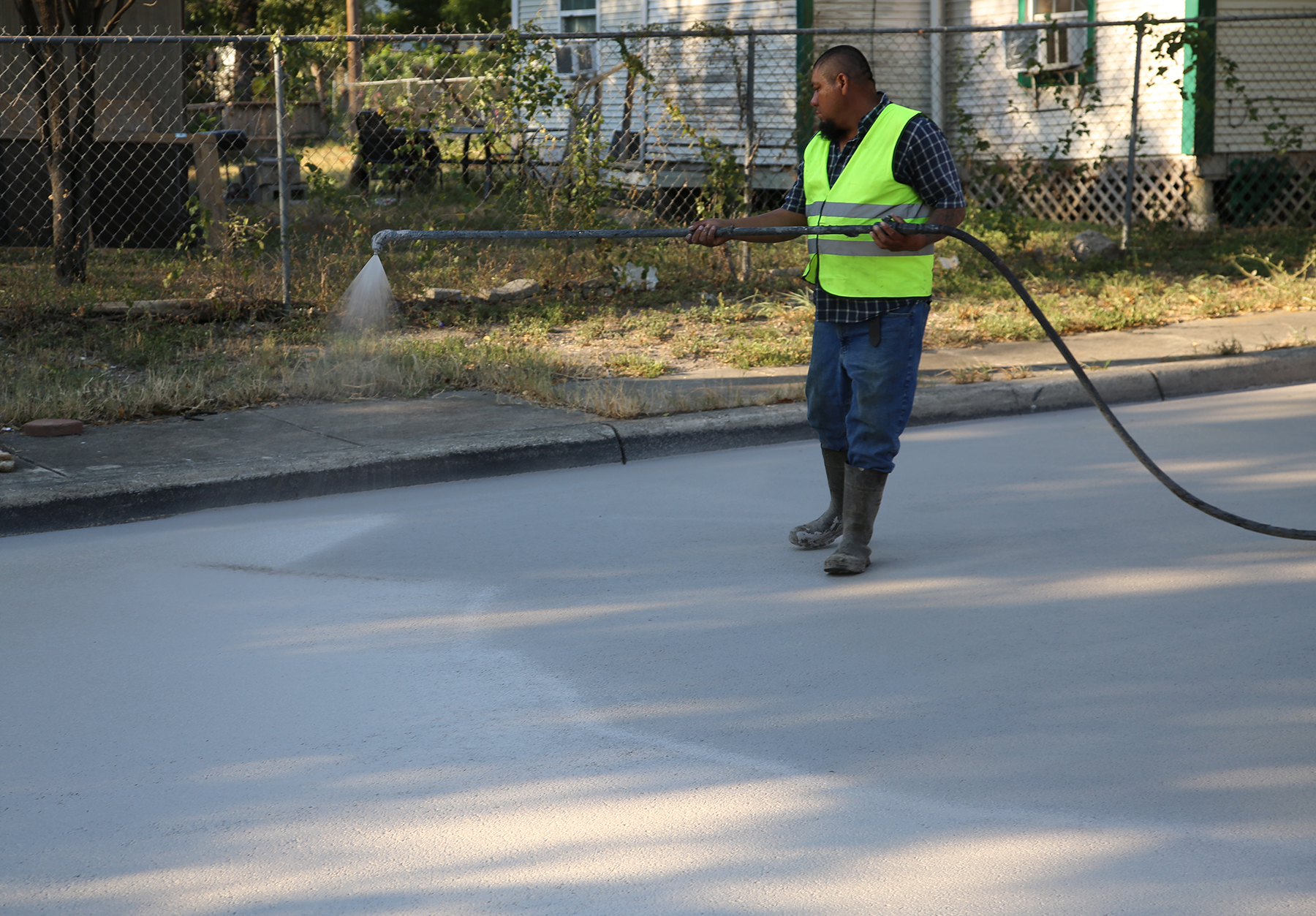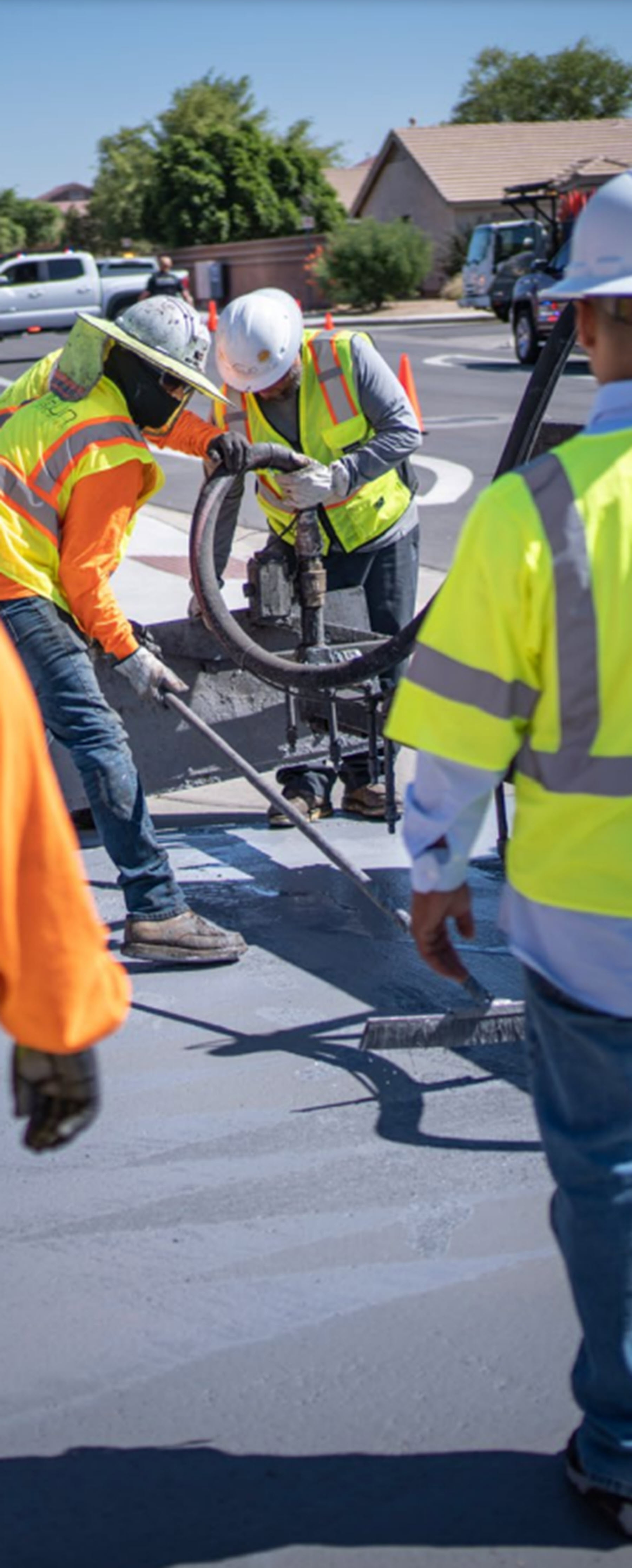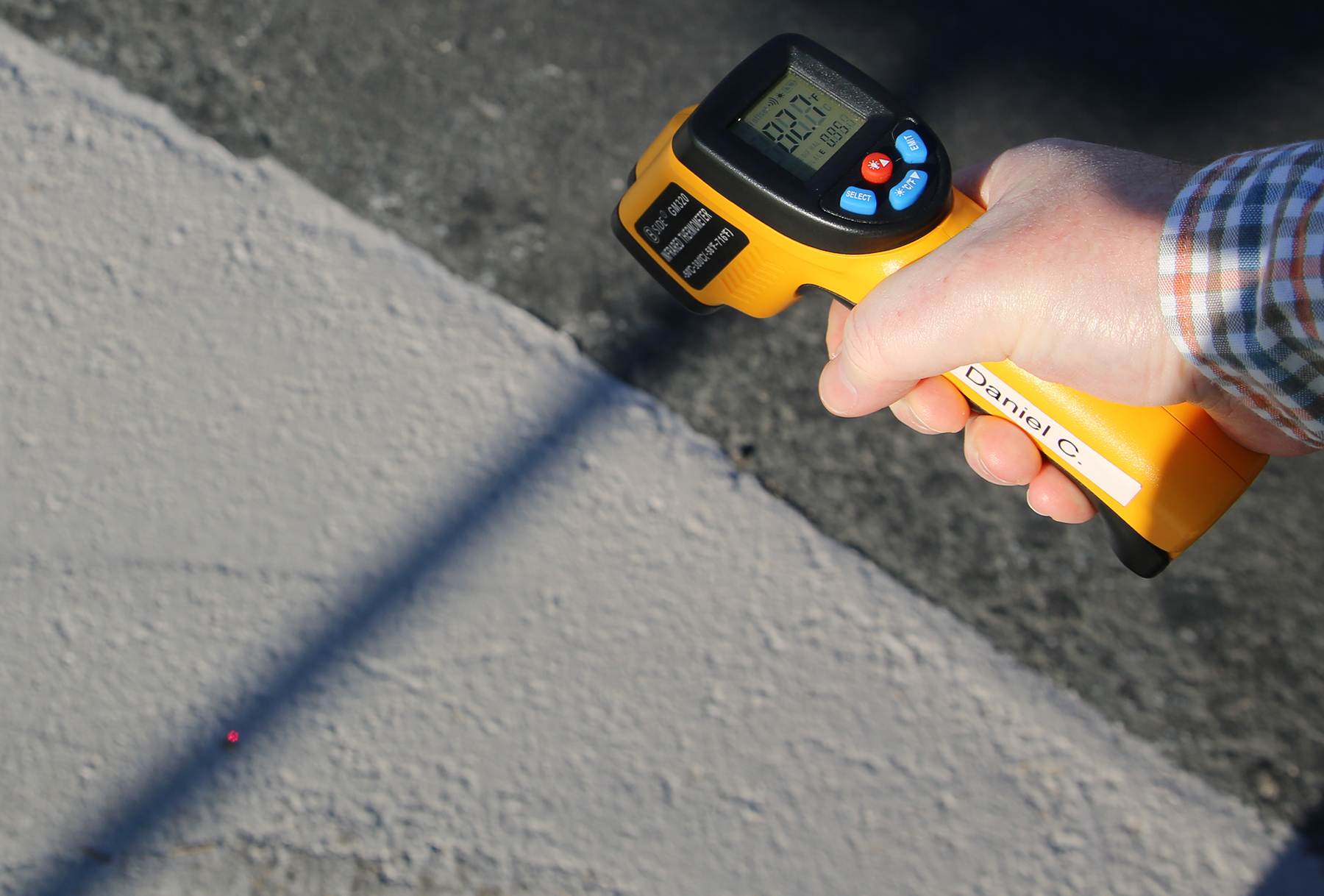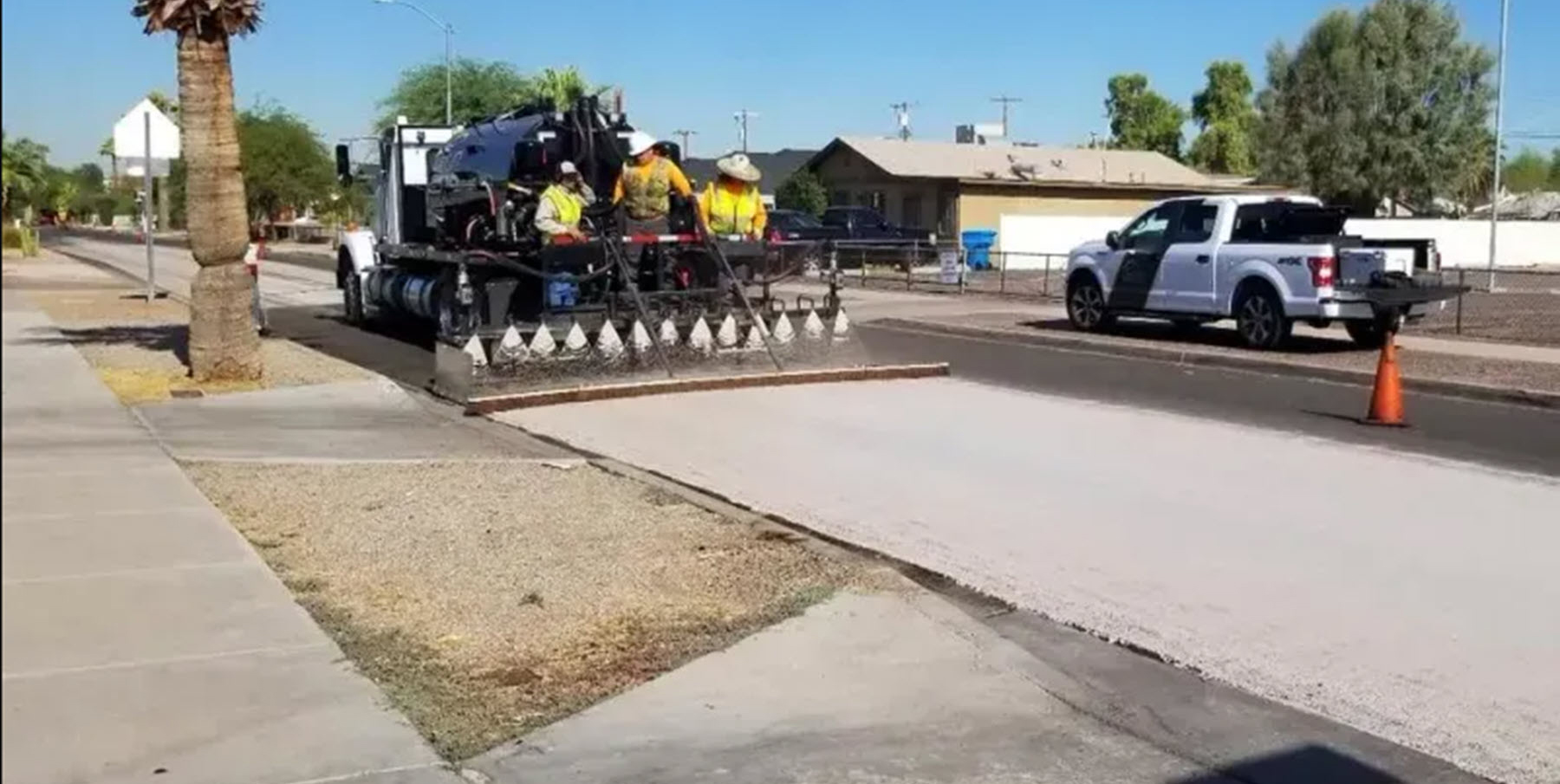
If it feels like cities are getting hotter each year, well, statistics show they are.
Planners are working on numerous strategies, including the use of cool pavement, to mitigate the negative effects. An annual average of 702 heat-related deaths occurred in the U.S. between 2004 and 2018, a report from the Centers for Disease Control and Prevention found.
Further reading:
- Winter is here; how can we protect wastewater, sewer infrastructure?
- Cities increasingly turn to porous pavement to ameliorate flooding
- Rising heat is scorching Americans – and our infrastructure
As the climate changes, the problem is exacerbated by the urban heat island effect, a phenomenon where cities grow hotter than surrounding rural areas due to a variety of factors, including heat-absorbing roof and road surfaces and fewer trees.
According to the Vibrant Cities Lab, “57 cities had measurable heat island effects over the past 10 years with an average of 2.4 degrees F warmer.” Among those, Las Vegas rose 7.3 degrees, Washington, D.C., was up 4.7 degrees, and Kansas City, Missouri, was 4.6 degrees warmer.

The cool paving approach places a layer of reflective material atop asphalt streets to increase their ability to reflect heat, meaning less is trapped in the asphalt and more radiates back into the atmosphere. The city of Los Angeles has pioneered projects in the San Fernando Valley over the last several years, and now other Sun Belt cities, including Phoenix and San Antonio, are piloting different road surface treatments.
Paving the way in the Sun Belt
In Phoenix, the nation’s hottest major city, for example, a report released in October by Rob and Melani Walton Sustainability Solutions and the Urban Climate Research Center at Arizona State University noted that “pavement accounts for 30%-40% of the total land cover of the Phoenix metropolitan area and significantly contributes to urban heat.”
Since 2020, Phoenix has been deploying one of the largest cool paving pilot projects in the country – over 100 miles of paved streets across neighborhoods in each of the city’s eight council districts. Over the summer and fall of 2022, ASU collected data about the pilot project and found that surface temperatures on streets with cool pavement were on average 10.5 degrees cooler in the afternoon and 12 degrees cooler at noon.
San Antonio is also rolling out an ambitious pilot project. A 2019 climate plan predicted the city could face 24 more days of 100-degree or higher weather by 2040. The city tested cool pavement on one street in 2021, and after an especially hot summer in 2022, the city council authorized $1 million to test cool paving on selected streets in 10 neighborhoods in 2023. (That year the city experienced 75 days over 100 degrees.)
“Climate change is no longer something that’s in the future. It’s here now,” said Douglas Melnick, San Antonio’s chief sustainability officer. “The strategy covers a multitude of interventions. Cool pavement is one. We’ve got street trees, we’ve got reflective roofs, weatherization, and energy efficiency improvements.”
The city partnered with the University of Texas at San Antonio to study how different coating material performed from a safety perspective and to gauge surface and air temperature changes. Researchers found the most effective product reduced surface temperature by an average of 3.58 degrees during the afternoon. When compared with a freshly paved street, the difference jumped to 18 degrees.
Meanwhile, in Irvine, California, southeast of Los Angeles, cool pavement coating was applied to two connected streets in one half-mile segment. Surface temperature measurements taken in August and September showed the treated surface was on average about 7-10 degrees cooler, says Alex E. Salazar, manager of project delivery at Irvine’s Public Works & Sustainability Department. The city is preparing to repave and apply the cool pavement coating to its civic center parking lot.
Lessons learned
For cool pavement applications to be most effective, city officials say, streets need to be in good condition, without a lot of cracks, and paving needs to be applied in warmer weather, so it cures faster.
“You’re looking mainly for dry weather. The products, for the most part, they do not like humidity, they do not like water, and they do not like low temperatures,” said Daniel Carriَn, EIT, project control manager with San Antonio’s Public Works Department. “Ideally, slurries are 55 degrees Fahrenheit and rising for application, and they can take on some humidity, they can take on some very light showers. But these products are more sensitive to that, so we need to make sure that it’s completely hot and dry.”

Surprisingly, planning pavement on streets filled with pedestrians – downtowns, for example – is not necessarily the best idea. Ryan Stevens, P.E., engineering manager for Phoenix’s Street Transportation Department, uses the analogy of sunscreen to make the point that in Phoenix, cool paving works best in places facing high exposure to the sun. Tall buildings in downtowns shade the streets. “We find these neighborhood streets in particular parts of our city that are higher priority because they’re really just baking under direct sunlight,” he said.
Iona Isachsen is senior project coordinator at Smart Surfaces Coalition, a Washington, D.C.-based nonprofit that helps cities develop sustainable initiatives that range from cool surfaces (roads and roofs) to green infrastructure, low-carbon materials, solar photovoltaic technology, and urban tree canopy.
She says cities are still skeptical about the benefits of cool pavement for pedestrian comfort. In Phoenix, ASU found that measurements of mean radiant temperature, which represents a “human’s radiant heat load over a surface,” according to the report, and better reflects a person’s experience of heat, were 4.5-5.8 degrees higher over cool pavement than nontreated asphalt in the middle of the day “due to higher surface reflectivity. Temperature differences were negligible pre-sunrise and after sunset.”
This is not a total surprise, given that surfaces with more reflectivity will reflect heat back into the air, where people can feel it. (Still, the increase in MRT assumes a pedestrian is standing in the middle of a treated street; there’s no MRT difference between treated and untreated streets for people walking on sidewalks.)
But Isachsen notes that a study on the Pacoima neighborhood, in the San Fernando Valley, showed the mean radiant temperature was a few degrees cooler on treated streets, suggesting what Isachsen calls “beneficial impacts to thermal comfort.” This difference, she adds, has left “a lot of cities confused and unsure (whether) this is a viable strategy that they should be trying out.”
One tool in the toolbox
Smart Surfaces Coalition runs the Cool Roadways Partnership to advance the number of pilots and programs by supporting cities in program design or pointing them to different funding resources that they can leverage. The partnership also hosts a quarterly forum for municipalities and researchers to talk about the successes and challenges of implementing cool pavement programs.
Through its Cities for Smart Surfaces program, the coalition helped Columbia, South Carolina, secure a $9 million federal grant for a cool paving pilot, along with other elements like “increasing solar and green infrastructure.” The organization is “looking to explore those opportunities with other cities, and hopefully we’ll help other cities try out cool pavement,” Isachsen said. “Federal funding has been really great at testing some of these more innovative strategies and also being able to fund the evaluation and the research side of these projects as well.”

Still, everyone agrees that cool paving is just one strategy to address the urban heat island effect. “One block isn’t going to be enough, but if you suddenly get a concentration of three or four blocks, you start seeing some impact,” Melnick said. San Antonio has put in place an air quality and temperature sensor network to monitor how cool paving is working with other heat mitigation approaches‚ including more tree cover and solar panels. The data may eventually influence revisions to the city’s development code.
Cool paving also shows promise in extending the life of street pavement – which could help negate its higher up-front investment.
Melnick notes that cool pavement alone can’t solve urban heat island issues but can be part of the equation “if this can provide relief, if this can reduce utility bills, if this can improve public health outcomes, improve air quality, as long as it’s meeting minimum safety specs for road materials. There are cities struggling with heat, and it’s only going to get worse.”



